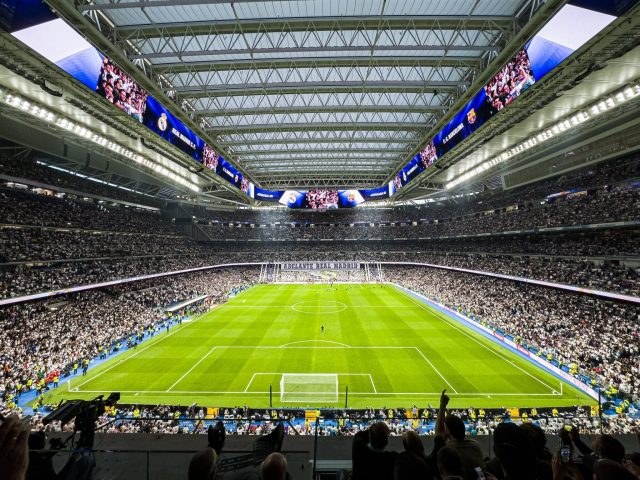A football stadium is more than just a facility for organising games, it’s a place of reverence for the fans and an artefact that reminds of the club’s glorious past. Of course, there are some venues that carry far more weight among true football fans than your regular stadium, most of them associated with legendary clubs. The home grounds of Real Madrid have that kind of reputation.
You don’t have to be a Real fan to appreciate the architectural beauty and rich tradition of this football sanctuary. This stadium has a special place in football history and represents one of the most interesting locations in Madrid for every person that enjoys soccer betting in South Africa. We list some of the reasons why you would be wise to book a trip to Santiago Bernabéu the next time you are visiting the European continent.
Unique Identity of the Stadium
From the very beginning, this stadium was different than any other football venue in Europe. It opened in 1947 while most of the continent was still in ruins, and with a capacity of more than 75,000 it was way ahead of its time. Named for a legendary Real Madrid footballer and official who oversaw the original construction, the stadium is a marvel of functionality and style that was simply awe inspiring when it was first built. In many ways, it is a personification of the club that calls it its home and its royal grandeur and maximalist ambitions. On a wider level, opening of the stadium signalled the start of a golden era of European football that required bigger and more professionally maintained venues.
Meeting Place for Generations of Fans
After the first round of renovations in the 1950s the capacity reached 125,000 while installation of floodlights allowed for late-start games ideal for TV broadcasts. The number of possible visitors decreased in the coming decades as the stadium added a roof and all-around seating, but these addition made the overall structure even more functional. Further improvements in the 1990s made the stadium much safer during high-intensity matches, while renovations in the 21st century brought the venerable stadium in line with modern expectations. Today, this stadium has a luxurious feel with VIP boxes, high-end dressing rooms, and a press-area capable of hosting the global contingent of reporters. It remains full of mementos of the past, but it doesn’t show its age in any negative ways. Quite contrary, it looks modern and technologically advanced – a perfect place for the new generation of fans to come of age.
History of Big Games
You would be hard pressed to find any football facility that saw more historical matches than Santiago Bernabéu in Madrid. That’s partly because its main tenant, Real Madrid, has been insanely successful throughout the stadium’s history. The club won 36 national titles and 15 European Cup/Champions League crowns, and many of the deciding games were played in front of roaring crowds at Santiago Bernabéu. That’s not all, since the stadium hosted a huge number of high-profile international matches, including most home fixtures played by the Spanish national team. The stadium has the distinction of hosting both a European Cup finals in 1964 and a World Cup finals in 1982. Add to that international club matches like the 2010 Champions League finals or 2018 Cup Libertadores finals, and the list of memorable games that took place here is really impressive.
What Santiago Bernabéu Means in Football Lore
Anyone who loves football knows the name of this stadium and feels a certain respect towards its historical significance. Visiting it in person is an experience that is cherished for a lifetime and talked about forever. Real Madrid has a specific kind of mystique and prestige that still gives it an advantage when signing talented players, and the possibility to play on the hallowed ground that was once used by legends can be the clincher. For many young fans, a chance to watch a game from the stands at Santiago Bernabéu was the event that started a lifelong relationship with the club and its huge community of supporters. That’s why the symbolic power of this stadium greatly outshines its technical features and size, serving as a reminder that the game itself is bigger than anyone who takes part in it.
Why This Stadium Is More than Just a Tourist Attraction
Every tourist guide of Madrid you can find online includes this palace of football, and for many people its draw is the main reason to make a stop in the city. If you are living in South Africa and decide to make a tour of Europe, it makes perfect sense to schedule a visit to one of the most iconic football venues in the world and use the occasion to learn more about Spain. In this way, the stadium can be a gateway to the local culture, a rallying place for international football fans coming to pay their respects, and a testament to the early era of soccer’s popularity. That’s why it’s no exaggeration to say that Santiago Bernabéu is not a mere tourist attraction – it’s an institution.



